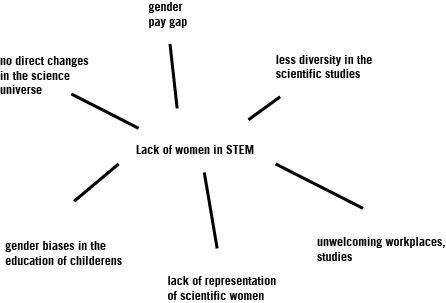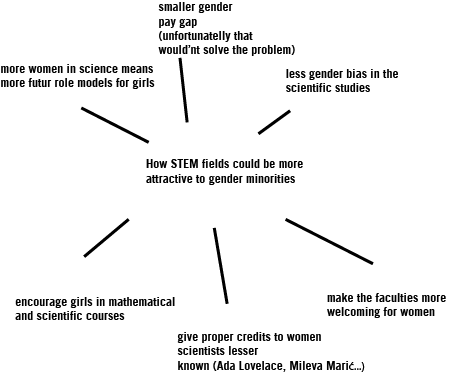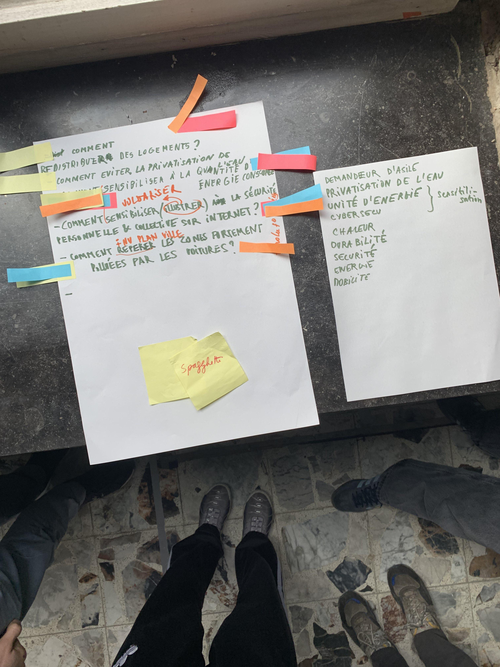5. Dynamique de groupe et projet final#
5. Dynamique de groupe et projet final#
Projects analysis#
The analysis through problem and solution trees is a powerful visual method for understanding and resolving complex issues.
Here are the key points:
Problem Tree:#
- Trunk: Represents the main problem.
- Roots: Signify the main causes.
- Branches: Indicate the direct causes.
Solution Tree:#
- Trunk: Involves reformulating the problem into an objective.
- Roots: Identify specific activities to develop to achieve the set objective.
- Branches: Outline the expected outcomes of implementing this objective.
What’s the purpose of doing this? The problem tree helps visualize the complexity of an issue by identifying its causes and consequences. By transforming it into an objective tree, you clearly define what you want to accomplish and the necessary actions to achieve it. This aids in strategic planning, enhances understanding of the issues, and guides decision-making for effective solutions.
Problem tree#
If you followed a little bit on my journey here, my problematic for my problem tree would not be hard to guess, as a Ma2 in computer science and engineering, i have feel the directs consequences of the lack of women in thoses fields, the direct misogynistics comments from the teachers, students and even people out of the faculty that are not capable of understand that a girl (with red hairs????) can study computer science, and enjoying it (yeah i know REALLY hard to understand):

Solution tree#

Group Creation and subjects#
In the final module, each participant was tasked with selecting an object linked to a scientific issue personally meaningful to them. I chose to bring an ethernet cable, symbolizing my connection to the pervasive lack of knowledge surrounding online security. This connection is especially vital for individuals, like myself, who are concerned about safeguarding their online presence, especially those who are in political associations (feminists, anti-racists, ecologists etc… ) and seek to autonomously navigate through acts of civil disobedience without being tracked. I feel a strong resonance with the widespread uncertainty about protecting oneself on the internet, encompassing aspects such as the intricacies of cookie usage, the necessity of a VPN, and the extent of information divulged about us by simply being online.

As we roamed around the classroom, observing the various objects, Gala’s plaid caught my attention. Intrigued, I joined forces with Gala, Elliot, and Milan, where we delved into issues related to water privatization, energy consumption, and the shortage of housing in Brussels.
After a brainstorming session and discussion about our respective interests, we engaged in a voting process using post-it notes to assign levels of importance to each issue. Our discussions led us to the following concerns:
- Addressing the equitable redistribution of housing (3 votes)
- Preventing water privatization (1 vote)
- Promoting awareness about energy consumption (2 votes)
- Raising awareness about the security implications of internet use (3 votes)
- Fostering general awareness (4 votes)
- Developing a map of pollution zones within a city
In collaboration, we aimed to explore solutions and strategies for these chosen topics.

Group Dynamics#
Several techniques were introduced to us to successfully carry out our group project.
Charter#
Initially, we decided to create a Charter. It was formulated after a discussion addressing potential issues we might encounter during this group project, including:
- Listening to everyone
- Finding a topic that appeals to everyone and being mindful of each person’s involvement
- Being efficient and making progress
- Ensuring that everyone has an opportunity to speak
Meeting Roles#
Here are the different roles along with brief descriptions:
- Facilitator: Their role is to facilitate communication and collaboration within the group.
- Time Management: This person ensures that group meetings and activities adhere to predetermined deadlines.
- Secretary: They take note of discussions and decisions made during meetings.
- Atmosphere: This individual is responsible of checking the weel being of everyone. They can give a feedback of each personnal involvement of everyone at the end of each meeting.
We decided to rotate these roles at each meeting.